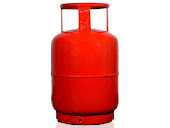The ethanol Challenge
The Cabinet has once again decided that the Petroleum Ministry must ensure
mandatory blending of 5 per cent ethanol with petrol. Deadline after
deadline has passed since 2006 and the ambitious programme is yet to take
off. A complex set of factors involving the sugar industry and the ethanol
market is at play. In recent months, the oil marketing companies have been
unable to contract for even half the quantity of ethanol needed for 5 per
cent doping. And the quantities offered are at rates as high as Rs. 41 a
litre. The oil companies have until now offered Rs. 21.50, although they are
open to paying a little more. One of them has meanwhile planned to invest in
sugar mills to ensure a captive source of ethanol. The cost of petrol is Rs.
23 a litre and the blending of ethanol obtained at a price that is any
higher will be uneconomical. But the sugar industry evidently finds better
price yields and guaranteed demand in the beverage, industrial, and fuel
sectors. There just may not be enough ethanol available in India to meet the
blending requirement unless the acreage under sugarcane goes up
significantly, and sugar mills are given the option to process sugarcane
juice directly into ethanol instead of sugar. Both these moves will have an
impact on sugar production and sugar prices. Given the rising price of sugar
and the insistence by the State governments that the sugar mills meet first
the demands of the beverage industry, finding enough ethanol is going to be
difficult.
Sugarcane-based ethanol is indeed "the most successful alternative fuel to
date." As an excellent oxygenate and octane booster, it clearly has
technical advantages; but in India, the world's second largest producer of
sugar, almost 90 per cent of ethanol comes from cane molasses, spelling
dependence on a single feedstock. Sugarcane production has historically been
marked by a certain cyclical volatility, with bumper years followed by years
of low production. In order to reduce its dependence on oil imports, rather
than setting much store by ethanol, India should look more aggressively at
other options including hybrid fuels and CNG. Several countries of the
world, notably Brazil - which introduced ethanol-blended petrol as early as
in 1931 - have come a long way here. But India has several limitations
including land availability constraints and food security concerns that may
leave a limited role for the biofuel option for now. It is time the
realities of the situation were factored into ethanol policy.
The Hindu, New Delhi, 10 December 2009




